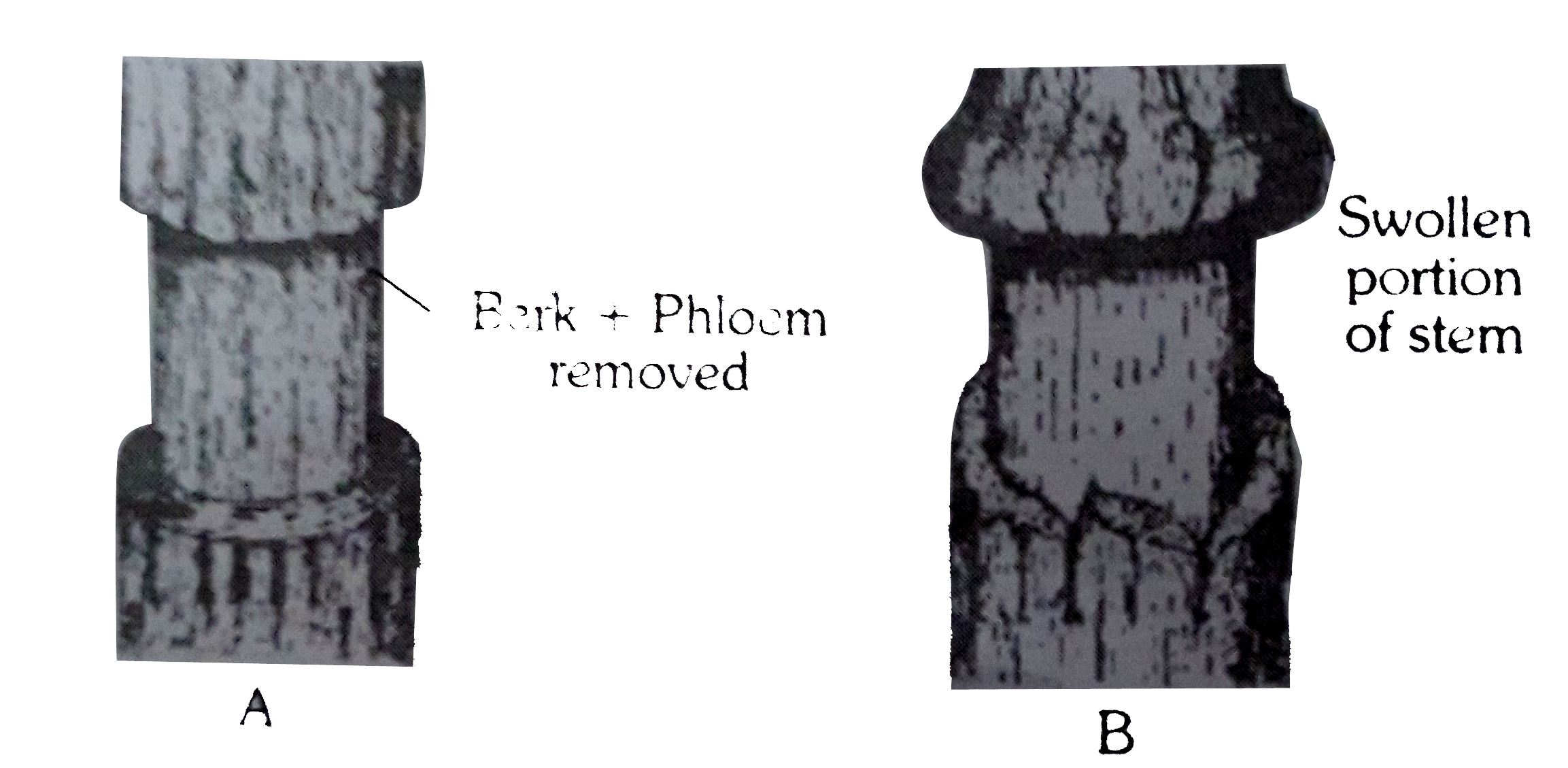Discuss the girdling experiment and its role.
Step-by-Step Solution for the Girdling Experiment
1. Definition of the Girdling Experiment: The girdling experiment is a method used to study the transport of food in plants, specifically to identify the tissue responsible for this function.
2. Procedure:
- A ring of bark is removed from the trunk of a tree. This ring is cut down to the depth of the phloem tissue, which is the layer responsible for transporting food (sugars) in plants.
- The removal of the bark and phloem creates a gap in the plant's vascular system.
3. Observation:
- After a few weeks, the area above the girdle (the cut) begins to swell. This swelling occurs because the food produced in the leaves (via photosynthesis) cannot move downwards to the roots due to the absence of the phloem tissue.
- Instead, the food accumulates in the upper part of the plant, leading to the observed swelling.
4. Conclusion:
- The experiment demonstrates that the phloem is essential for the downward transport of food in plants. When the phloem is removed, the food cannot be transported, leading to its accumulation above the girdle.
- This confirms that the phloem is the tissue responsible for the translocation of food in plants.
5. Role of the Experiment:
- The primary role of the girdling experiment is to provide clear evidence that phloem is the tissue involved in the transport of nutrients and food within the plant. It helps in understanding the function of vascular tissues in plants.
- A ring of bark is removed from the trunk of a tree. This ring is cut down to the depth of the phloem tissue, which is the layer responsible for transporting food (sugars) in plants.
- The removal of the bark and phloem creates a gap in the plant's vascular system.
- After a few weeks, the area above the girdle (the cut) begins to swell. This swelling occurs because the food produced in the leaves (via photosynthesis) cannot move downwards to the roots due to the absence of the phloem tissue.
- Instead, the food accumulates in the upper part of the plant, leading to the observed swelling.
- The experiment demonstrates that the phloem is essential for the downward transport of food in plants. When the phloem is removed, the food cannot be transported, leading to its accumulation above the girdle.
- This confirms that the phloem is the tissue responsible for the translocation of food in plants.
- The primary role of the girdling experiment is to provide clear evidence that phloem is the tissue involved in the transport of nutrients and food within the plant. It helps in understanding the function of vascular tissues in plants.
Similar Questions
Knowledge Check
For conducting girdling experiments
Athe cortex is removedBthe cortex and primary phloem and removedCall tissues upto secondary xylem are removedDnone of the aboveRinging/girdling experiment was first performed by
AHartigBStrassburgerCGodlewskiDBoseMeaningful girdling experiments can not be perfomred with sugacane plant because
Aits stem is thinBits vascular bundles are scattered and not arrnged in a sequential orderCits stem suface is coasted with waxDphloem is interio to xylem
The girdling or ringing experiment is that
View SolutionThe girdling or ringing experiment to prove that the water moves through the xylem vessels was performed by
View SolutionThe figure indicates the ringing or girdling experiment. Bark having phloem is removed. This experiment proves that phloem is the pat for translocation of food. In this experiment swollen part of stem has been shown. The possible cause of this swollen is

View SolutionRinging/girdling experiments demonstrate
View SolutionThere is no result of 'Girdling Experiment ' in monocot plant , due to :-
View Solution
